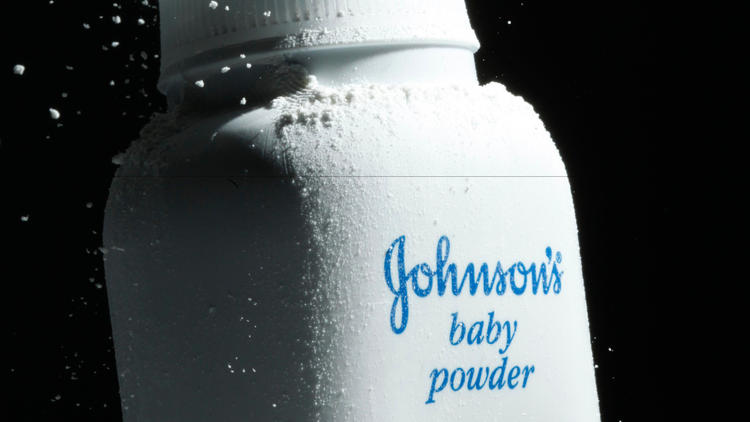Johnson & Johnson is an immense pharmaceutical and consumer products company of the type that the public loves to hate. Recently, it’s been getting absolutely killed by juries holding its baby powder responsible for causing several women’s ovarian cancers. The damage awards levied against Johnson by juries in St. Louis on behalf of two families total $127 million. That sum would suggest that the scientific evidence is clear that Johnson’s talcum powder caused the women’s cancers. But what does science say?
Science says the evidence is murky at best, often self-contradictory, and may well be nonexistent. One study involving more than 100,000 women found “little support for any substantial association” between talc use and overall ovarian cancer risk.
That’s not how the lawyers who brought the St. Louis cases put it. In a lawsuit filed in Missouri state court in June 2014, they cite a study showing a “92% increased risk in ovarian cancer” among women who reported using talcum power in their genital area. The crux of their case is that their clients’ ovarian cancer was “directly and proximately caused” by Johnson & Johnson’s manufacture and sale of its baby powder and Shower to Shower products, along with marketing that “compelled women” to “dust themselves with this product to mask odors” and help them “feel soft, fresh, and comfortable.”
The plaintiffs who are also suing Luzenac America, a talc manufacturer, argue that Johnson & Johnson has known since 1971 of a link between ovarian cancer and the application of talc to the genital area. Since the 1980s, the lawsuit says, the companies have been advised by scientists and cancer prevention organizations to warn consumers of the possible risks, but never have done so.
Johnson & Johnson, in response, says that “multiple scientific and regulatory reviews have determined that talc is safe for use in cosmetic products and the labeling on Johnson’s Baby Powder is appropriate.” After a St. Louis jury awarded a South Dakota woman $55 million on Monday, the company said the decision “goes against 30 years of studies by medical experts around the world that continue to support the safety of cosmetic talc.” That verdict followed a $72-million award to another plaintiff in the same court, including $62 million in punitive damages. Johnson faces at least an additional 1,200 lawsuits on similar claims.
Yet taken altogether, these cases raise real questions about whether the American legal system is well-equipped to weigh scientific evidence and assign liability where the facts are, at best, equivocal. Since we aren’t privy to the discussions in the jury rooms, we can’t say for sure what aspects of these cases led the jurors to their punishing conclusions.
It’s quite possible that Johnson & Johnson, as a hugely profitable $70-billion company, was a sitting duck for juror hostility. It’s proper to note that government agencies have accused the company of overly aggressive marketing and promotion of prescription drugs, including dangerous opioids. So it’s also possible that the juries heard convincing evidence that Johnson deliberately downplayed the risks of talc in order to rack up sales.
Perhaps most important, the verdicts may reflect a loss of credibility of scientific evidence in general. Some of the leading research asserting a link between talc and ovarian cancer was done by a scientist who is a paid consultant for the plaintiffs in the St. Louis case; but one of the more comprehensive papers debunking the link was paid for partially by a law firm representing Luzenac. It’s unsurprising that the public, and jurors, don’t know who to believe, if anyone.
Still, the link between talc and ovarian cancer appears to be unproven. Let’s take a look.
Ovarian cancer is relatively rare, accounting for only 1.3% of all new cases in the U.S., according to the National Cancer Institute. But it’s a tenacious killer. It’s the eighth most common cancer and the fifth leading cause of cancer-related death among women. Fewer than half of all patients survive five years after diagnosis.
Most ovarian cancer authorities seem to suggest that any role played by talc in the incidence of ovarian cancer is swamped by more easily identified risk factors. The Ovarian Cancer National Alliance doesn’t list talc at all as a risk factor. Among the main causes of the disease, the organization says, are heredity–mutations in breast cancer gene 1 (BRCA1) or breast cancer gene 2 (BRCA2) are “responsible for about 10 to 15 percent of all ovarian cancers”; obesity; and age — rates are highest in women aged 55-64. Reproductive history is another factor, with rates elevated among women who have not given birth or taken oral contraceptives.
To read this entire article by The Los Angeles Times on The Clearity Portal, click here.


